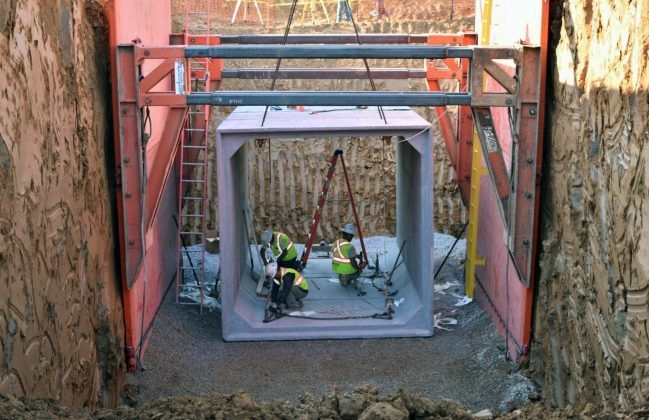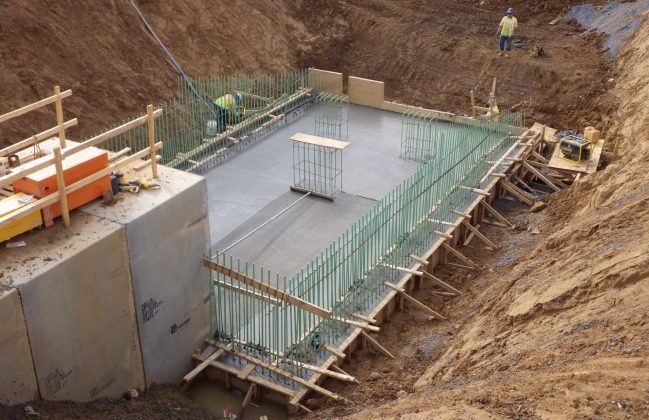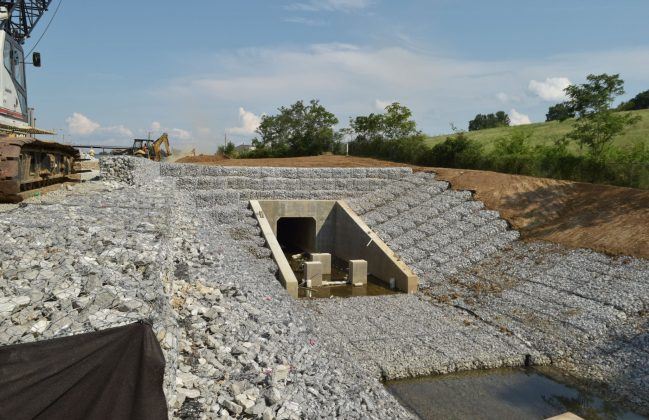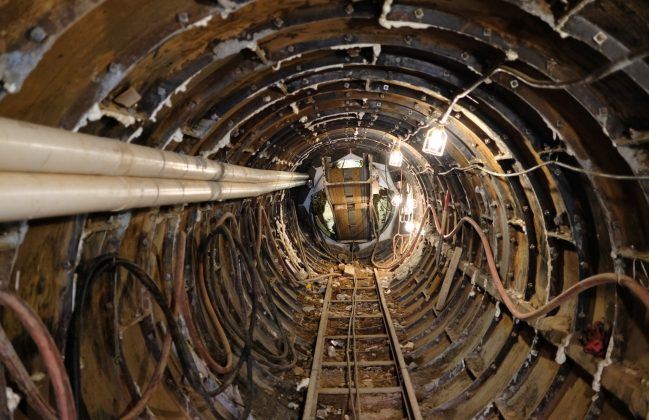Chattanooga’s Big Dig
The historic district of St. Elmo in Chattanooga, Tennessee is located in the valley of Lookout Mountain near the Tennessee River. Storm drainage for the St. Elmo area outfalls into Chattanooga Creek at the curl in the Tennessee River referred to as Moccasin Bend. The existing area storm infrastructure consisted of different pipe sizes and materials that had been added on to and extended over many years. Area storm water (approximately 1,100-acres) fed into a 10’X7’ corrugated metal pipe that extended over 30 feet below the now capped Wheland Foundry Landfill.
The City of Chattanooga contracted Civic Engineering and Information Technologies, Inc. (Civic) to perform a hydraulic study and structural evaluation of the existing storm conveyance to evaluate existing conditions and determine requirements to redirect storm conveyance around the landfill. The findings indicated that existing infrastructure was undersized for existing stormwater flows as suspected, and that the pipe under the landfill was deteriorated and needed to be addressed in an expeditious manner. A collapse of this pipe would not only cause flooding throughout the area, but it could also leach the landfilled foundry sand into the Chattanooga Creek and Tennessee Rivers.
The Plan: At the City’s request, Civic developed a plan to re-route the existing storm infrastructure around the landfill. The plan consisted of 1,360 feet of 10’X10’ box culvert at depths reaching over 30 feet, 200 feet of 8’X8’ box culvert, 630 feet of 60” RCP, 230 feet of 54” RCP and 400 feet of 36” RCP, including three tunnels. The project coordinated with the St. Elmo Riverwalk project to include installation of sidewalks, bike lanes and streetscape features.
Environmental Impacts and Considerations: Due to the proximity of the Wheland Foundry landfill and history of area soil and foundry sand contamination, the City requested S&ME characterize soil and groundwater contamination within soil and foundry sands that comprise historical fill within the alignment.
Civic teamed with S&ME to develop a comprehensive Soil and Groundwater Management Plan for the effective management of excavated materials. S&ME provided daily on-site evaluation of excavated materials utilizing PID and XRF instrumentation to segregate impacted materials and supported stakeholders to reuse surplus soils as fill for two area brownfields sites, landfill dispose of special wastes, and return remaining excavated material as structural fill within the storm water conveyance.
The Results: The construction of the storm infrastructure will be completed in July 2018, approximately 20 months after groundbreaking with a cost of $15,000,000. The project significantly increased the storm capacity to accommodate over 1,900 CFS for a 100-year storm event, provided strategically placed structures for future expansion and abandoned and sealed the existing, structurally deficient metal pipe under the Wheland Foundry Landfill to permanently protect the rivers and streams in the area from the landfill’s waste materials.
This Project is a ACEC Tennessee’s 2018 People’s Choice Award Winner, as well as the American Society of Civil Engineers, Chattanooga Engineer’s Club, Society of Women Engineers & Tennessee Society of Professional Engineers’ Outstanding Engineering Project; Judge’ Choice Award Winner, and the City of Chattanooga’s Public Works Project of the Year in 2018.








